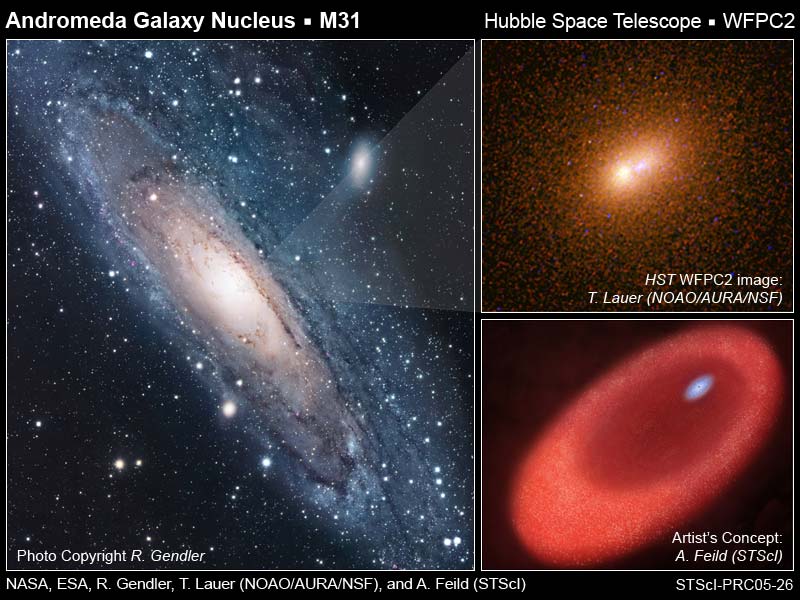
As far back as 1974 astronomers noted a curious asymmetry to the nucleus of M31. It wasn't until 1995 that the Hubble Space Telescope with its great precision, was able to resolve the light of the nucleus into two separate structures. The two light sources of the double nucleus are separated by a miniscule 0.49 arcseconds (6 light years), a distance difficult or impossible to resolve with earth based telescopes. HST images resolved two brightness peaks which were named P1 and P2. Further investigation showed that the optically dimmer P2 was very close to the true center of the galaxy. The brighter P1 is slightly off center creating the illusion of an asymmetric nucleus in ground based images. Recent HST observations have identified a rotating disk of more than 400 blue stars orbiting the true nucleus. The disk of blue stars formed some 200 million years ago in a sudden starburst. The disk is only one light year in diameter and its stars have a remarkable orbital velocity of 2.2 million miles per hour, indicative of a central structure with truly enormous mass. The stars remarkable speed can only be explained by a central black hole having a total mass of some 140 million suns. The brighter light source P1 is artifactual and has its basis in the eccentricity of the rotating circumnuclear stellar disk. It seems that the appearance of the two extremes of the ellipsoidal orbit creates an illusion of a second bright region towards our line of site. Several other galaxies are known which possess a true double nucleus however in these cases the second nucleus was most likely acquired in a previous merger event. It is now widely believed that most, if not all, galaxies have supermassive black holes in their centers.

HST image upper right showing the resolved double nucleus.